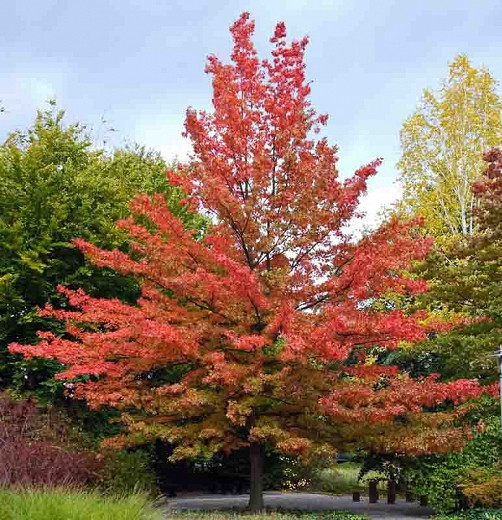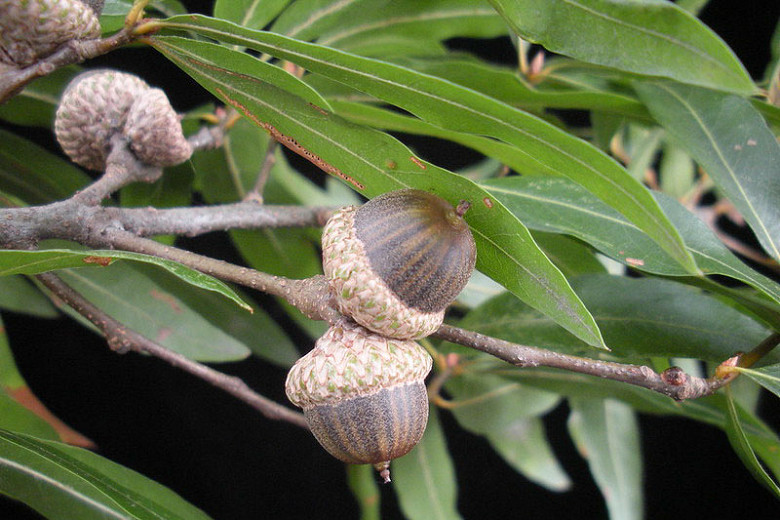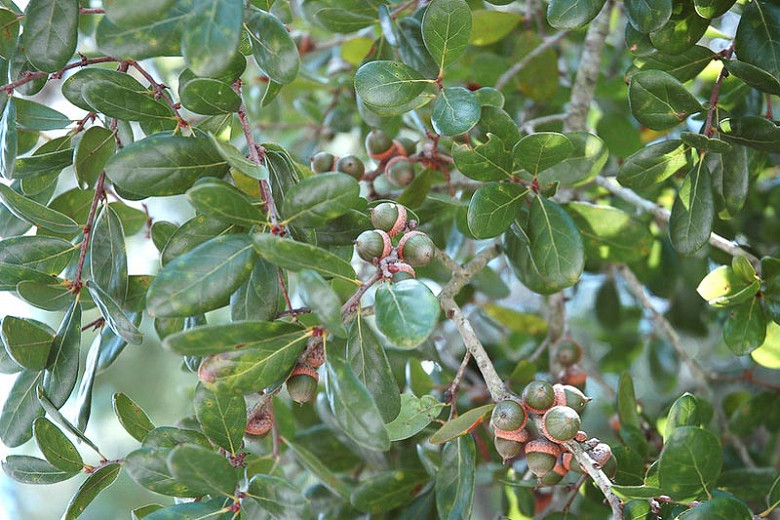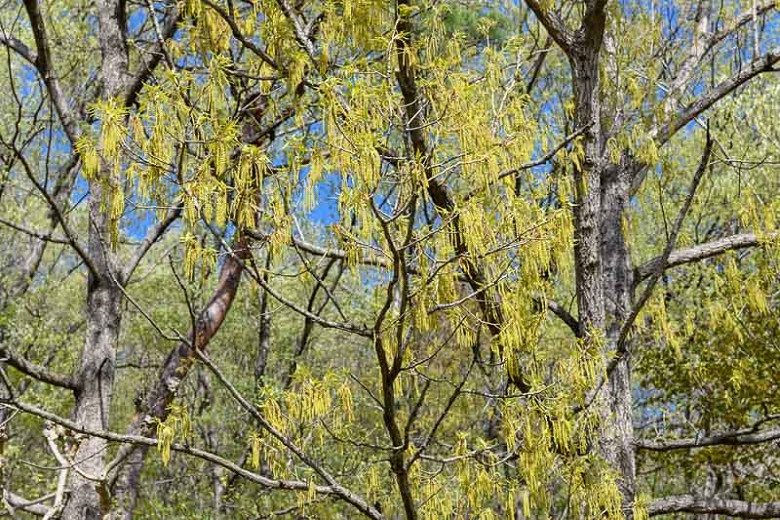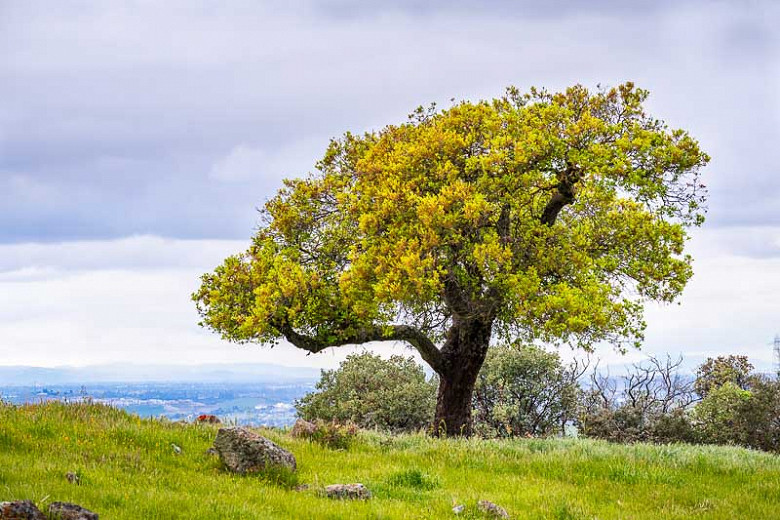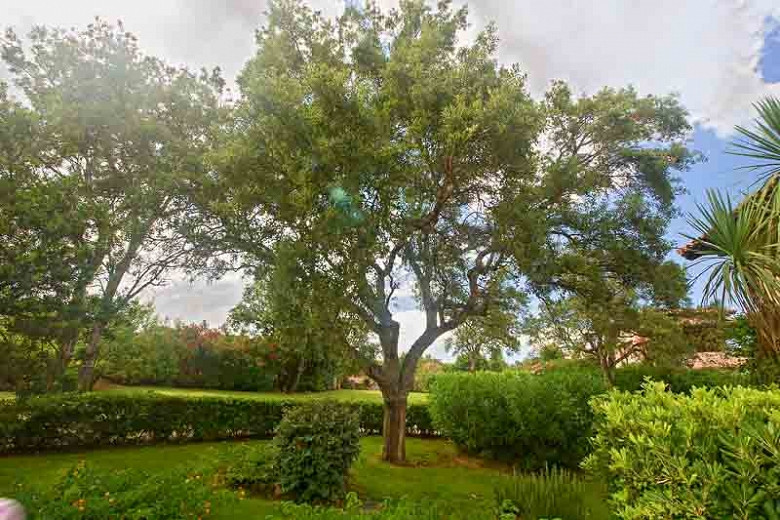Quercus palustris (Pink Oak)
One of the easiest oaks to grow and transplant, Quercus palustris (Pink Oak) is a fast-growing, large deciduous tree adorned with a dense, pyramidal crown. Its lower branches are pendulous, the middle branches are horizontal and the upper branches are upright. This distinctive branching pattern can be admired in winter when its naked silhouette graces the landscape. The foliage of deeply cut, lustrous dark green leaves, adorned with 5-7 sharply pointed lobes, turns russet-red to bright crimson in the fall. Inconspicuous yellow-green catkins appear in spring as the leaves unfurl. Its smooth gray-brown bark usually develops ridging with age. The rounded acorns are a valuable source of food for small mammals and birds, but Pink Oak may take up to 15-20 years before the first crop of acorns is produced. Handsome in all seasons, tolerant of many soil conditions, heat and air pollution, Pink Oak is highly popular in eastern North America, having been widely planted as both a shade and street tree. Excellent specimen tree for lawns and street plantings.
- Recipient of the prestigious Award of Garden Merit of the Royal Horticultural Society for its outstanding qualities
- Grows up to 50-70 ft. tall (15-21 m) and 40-60 ft. wide (12-18 m).
- A full sun lover, this tree is easily grown in fertile, medium to wet, acidic, well-drained soils. Tolerates poorly drained soils. Pin oak requires acid soils for best performance.
- Perfect as a specimen plant.
- May be affected by aphids, oak gall wasps, powdery mildew and oak wilt.
- Propagate by seed, sowing as soon as ripe, in a coldframe or grafting in mid-autumn or early winter.
- Toxic to horses.
- Native to the northeastern United States, southeastern Canada.
Requirements
| Hardiness | 5 – 8 |
|---|---|
| Heat Zones | 5 – 8 |
| Climate Zones | 2, 2A, 2B, 3, 3A, 3B, 4, 5, 6, 7, 8, 9, 10, 14, 15, 16, 17, 18, 19, 20, 21, 22, 23, 24 |
| Plant Type | Trees |
| Plant Family | Quercus – Oaks |
| Exposure | Full Sun |
| Season of Interest | Spring (Mid,Late)Summer (Early,Mid,Late)Fall |
| Height | 50' – 70' (15m – 21m) |
| Spread | 40' – 60' (12m – 18m) |
| Water Needs | Average |
| Maintenance | Low |
| Soil Type | Clay, Loam, Sand |
| Soil pH | Acid, Neutral |
| Soil Drainage | Moist but Well-Drained, Well-Drained |
| Characteristics | Plant of Merit, Showy |
| Native Plants | United States, Midwest, Illinois, Indiana, Iowa, Kansas, Michigan, Missouri, Nebraska, Ohio, Wisconsin, Northeast, Connecticut, Delaware, Maine, Massachusetts, Maryland, New Jersey, New York, Pennsylvania, Rhode Island, Southeast, Arkansas, Georgia, Kentucky, Mississippi, North Carolina, South Carolina, Tennessee, Virginia, West Virginia, Southwest, Oklahoma |
| Tolerance | Wet Soil |
| Garden Uses | Beds and Borders |
| Garden Styles | Informal and Cottage, Prairie and Meadow |
